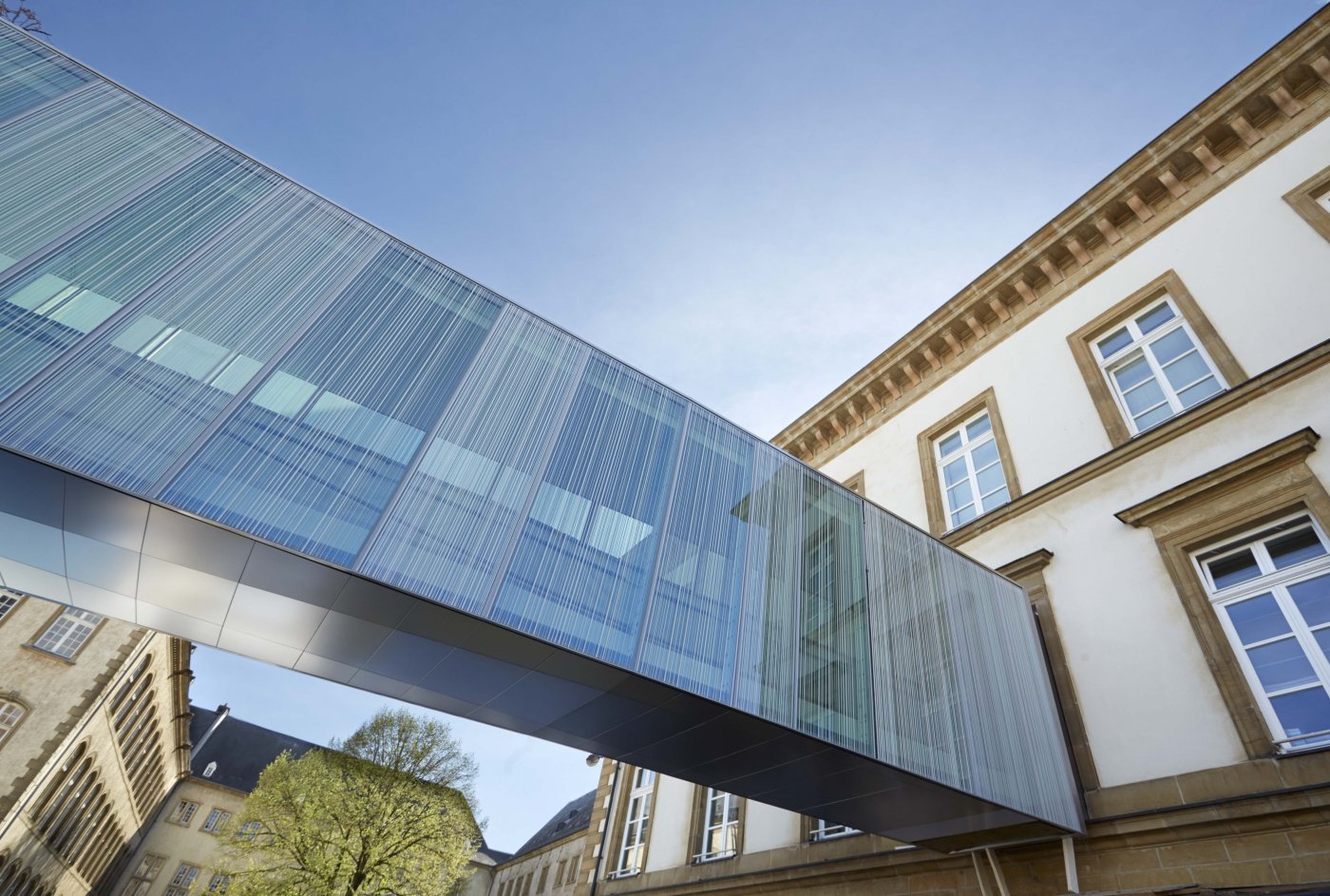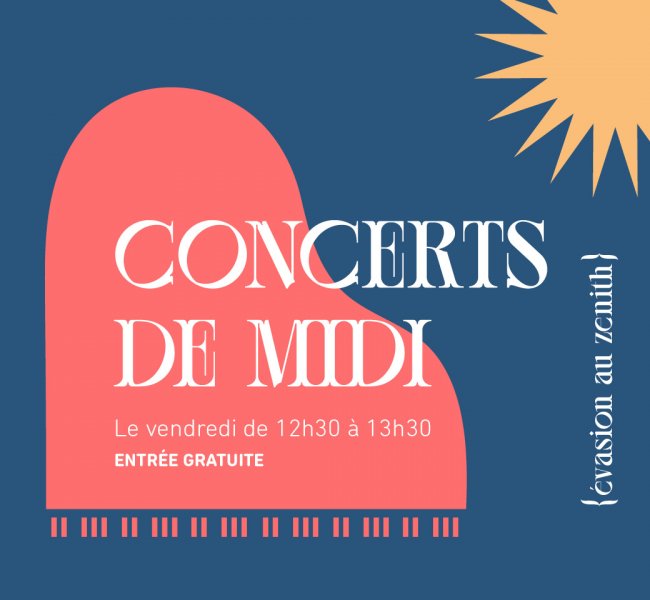Rapport analytique
Retransmission en direct de la séance
Green architecture
QUESTION POSED BY PAUL GALLES
The City's resilience to climate is currently a major topic of discussion. The issue has led to the emergence of a number of interesting ideas, such as green architecture.
Is this issue important for the College of Aldermen? Are efforts being made to consider making all roofs green? What kinds of roofs would be suitable for this? Milan has implemented the "bosco verticale" project, in which a tall building looks like a vertical forest. Would green facades like that also be an option in Luxembourg City? Are there other ideas?
RESPONSE PROVIDED BY ALDERMAN PATRICK GOLDSCHMIDT
It goes without saying that lots of greenery is beneficial for the climate. But at the same time, green facades raise a host of questions and problems.
Currently, 32 buildings in Luxembourg City have green roofs. Green roofs will continue to be supported, and they are even mandatory for new Special Development Plans (Plan d'aménagement particulier – PAP).
However, to the best of my and the Service Urbanisme's (Urban Planning Department's) knowledge, there are no buildings in Luxembourg City with a green facade. The College of Aldermen would like this option to be taken into account for future developments, but we will need to analyse potential problems more carefully in order to determine whether green facades are as beneficial as we think.
RESPONSE PROVIDED BY MAYOR LYDIE POLFER
What we do know is that green facades require a lot of maintenance, and especially a lot of water.
Revision of the General Development Plan (PAG), some Special Development Plans (PAP) and the Building Regulations with a view to meeting the challenges of climate change
QUESTION POSED BY FRANÇOIS BENOY
The drought and floods we experienced in the last few summers are clear proof that we are in the midst of a climate crisis and that we need to change our approach. People are now aware that we need to work towards achieving greater energy independence and contribute to accelerating the transition to climate friendly energy options. However, the City's regulations on this issue present a number of barriers and discrepancies, which I have already drawn your attention to.
For example, sometimes residents are not authorised to install heat pumps or air conditioning systems (e.g., in protected areas). The conditions for installing solar thermal and photovoltaic collectors are very restrictive and do not take into account technological advances, thanks to which photovoltaic panels now blend in with their surroundings. Exterior insulation is partially prohibited – namely, if it encroaches on the public thoroughfare or protected areas. We are continuing to see a proliferation of gravel gardens, even though they are not allowed under the Building Regulations. In addition, there is no requirement to collect rainwater.
Does the College of Aldermen share the view that the Building Regulations, the General Development Plan (Plan d'aménagement général – PAG) and some Special Development Plans (Plans d'aménagement particulier – PAP) should be revised to meet the challenges of climate change? If so, when will the proposed amendments be presented to the Municipal Council?
RESPONSE PROVIDED BY MAYOR LYDIE POLFER
First of all, we need to distinguish between PAPs for new districts (PAP nouveau quartier) and PAPs for existing districts (PAP quartier existant). For PAPs for new districts, all of the points that Councillor Benoy has listed are not only permitted but are in fact mandatory. For PAPs for existing districts, the situation is different. Heat pumps are not authorised in existing districts if their operation is likely to cause a nuisance in the neighbourhood. We are aware that the technology is advancing and that heat pumps are getting quieter. The Service Urbanisme is working on updating the Building Regulations, and has prioritised four points. As such, the amendments aim to promote reducing energy consumption wherever possible (through thermal insulation of facades and roofs, installation of heat pumps, etc.), to improve noise protection, and to encourage the use of renewable energies (with solar panels on facades or roofs, etc.). As for solar panels on roofs, one of the problems that arises – and which has already been discussed by the Organisation of World Heritage Cities – is reflections from solar panels in protected districts located below other parts of the city. These regulations will change to keep pace with technical advances. The fourth point concerns the circular economy: given that the lifetime of new buildings is no longer 60 to 80 years, but rather 30 to 40 years, we need to ensure that building materials are reused. These amendments to the Building Regulations will be presented to the College of Aldermen in the coming weeks, and then to the relevant advisory committee. As for gravel gardens, the City can only report incidents to the relevant government authority, which rarely responds when we share information with them.
Unhygienic conditions of Place Hamilius
QUESTION POSED BY CATHY FAYOT
I do my shopping in the city, and as a regular at the bi-weekly market, I go to the Place Hamilius market every Saturday morning. When you exit the underground car park and start heading towards the market stands, you're immediately confronted with all sorts of waste and rubbish: liquids, cardboard boxes, cans, cigarette butts, etc. This rubbish has already partly damaged the ground and stone street furniture, to the extent that stains have become deeply embedded in the stone.
Is the site of the bi-weekly market cleaned by the Service Hygiène (Sanitation Department) early in the morning before the stands are set up? How often is the area in front of the post office generally cleaned during the week? This site is supposed to be a point of pride for the city, but it is often a place where people gather at night, and that causes the problems I have mentioned. Is the area cleaned using a street sweeper only, or are special products also used? These questions also apply to other places in Ville-Haute. Has the City received complaints about quality of life from people who live in the city centre, and particularly from residents of the buildings put up as part of the Royal-Hamilius project, who paid a lot of money for their apartments?
RESPONSE PROVIDED BY ALDERMAN PATRICK GOLDSCHMIDT
It is important to the members of the College of Aldermen that the city is always clean, including this beautifully redeveloped square.
The City's Service Hygiène cleans the square using a vacuum street sweeper on Mondays and Fridays before and after the market. Although the agreements signed with market vendors state that stands cannot be set up before 6 o'clock in the morning, some vendors begin setting up their stands from as early as 4:00 or 4:30 – that is to say, before the arrival of the Service Hygiène, which does not begin cleaning until around 5:45, in part to avoid disturbing residents. No matter how much residents have paid for their apartments, everyone has the right to a good night's rest and peaceful surroundings during the day, and the site must be kept clean. Even if some stands are already in place at 6:00, the street cleaners try to clean the area as best as they can.
The Service Hygiène deep cleans this area thoroughly every day, early in the morning, using leaf blowers and a vacuum street sweeper. In addition, Service Hygiène staff remove rubbish and empty the bins in the pedestrian zone continuously from 9:00 to 17:00 on weekdays, from 12:00 to 17:30 on Saturdays and, from April to October, from 13:00 to 17:00 on Sundays.
The area is cleaned using a vacuum street sweeper that uses water only. The Service Hygiène has ordered a special machine to clean the paving.
Cleanliness is a priority for the City. I want to stress that the City does its best, within the limits of remit, to make sure that Place Hamilius is not only kept clean but also safe. You are aware that cameras were installed there several years ago, and that we have tried to post staff from a security firm there to keep the peace. If you go there at 7 o'clock at night, you will notice that the square is becoming a lawless area. This is not right. We have a right to expect all individuals to abide by the law and respect other people. This is no longer the case in Place Hamilius. That is why we are not letting up on our efforts to urge the police and other government bodies to take the necessary measures. For its part, the City is doing what it can. It keeps the area clean and has included the square in the "À vos côtés" initiative. We would like to do more, but some members of the municipal council would find reason to criticise us. Everyone needs to do their part to help keep the square clean and safe and to preserve the quality of life.
RESPONSE PROVIDED BY MAYOR LYDIE POLFER
Last Monday we had a meeting with the Minister for the Police because what is happening in Place Hamilius is unbearable and unacceptable. This is in fact a problem of unhygienic conditions. Photos show that the public thoroughfare is used as a toilet. We are doing everything in our power.
It is crucial that we find a solution for the perpetrators of these acts, people to whom we offer help every day but who refuse it. Until we find a solution for them, the Service Hygiène staff could clean the area two or even three times a day, but doing so will not improve the cleanliness of the area. The situation has become unbearable. I made this very clear during the meeting with the Minister for the Police, because only the police has the authority to sanction violations of the City's General Regulations on Public Order and Safety (Règlement général de police). In addition to these violations, there are cases of people getting into knife fights.
The file in which the City records the complaints it receives has is now very thick. And the complainants are quite right! Given the situation, it is incomprehensible that the City has not yet received the required authorisation from the Minister for the CCTV cameras in Place Hamilius. When the new law on the use of CCTV cameras came into force, all of the cameras satisfied the authorisation requirements – those on the pedestrian and cycle bridge under Pont Adolphe, those on the Glacis and those in Kirchberg – with one exception: those in Place Hamilius. It's simply mind boggling. If the cameras in Place Hamilius were operational, that would not necessarily solve the problems there, but at least we would have clear proof that violations of the General Regulations on Public Order and Safety are being committed.
Our meeting with the Minister for the Police and the management of the Grand Ducal Police lasted an hour and a half. It is my hope that cameras will be installed in Place Hamilius sometime next month, and that the police will step in and sanction clear violations of the General Regulations on Public Order and Safety.
"City Night Bus" lines and schedules
QUESTION POSED BY GABRIEL BOISANTE
The City Night Bus (lines CN1 to CN7) is an important service for people who go out or work late at night, or start work early in the morning. Residents of several districts, including new ones, have recently approached us to ask if it would be possible to extend the lines and schedules of these buses. Are there plans to extend these lines to new districts, such as Cloche d'Or? Does the City have weekend user statistics so we can determine if schedules could be extended to 4:00 instead of 3:30?
RESPONSE PROVIDED BY ALDERMAN PATRICK GOLDSCHMIDT
Obviously, with only seven lines, the night-time bus service network is not as dense as the regular bus network with its 31 lines. However, where the current night-time bus service is concerned, around 78% of the city's population lives within 300 metres of a bus stop, and 84% lives within 350 metres of one. This means that around one-sixth of residents live farther than that from a bus stop. Which is why the City Night Bus service is regularly adjusted. The next time an adjustment is planned, we will analyse the feasibility of extending the "City Night Bus" service to new districts.
It is worth pointing out that 82% of customers use the main line, City Night Bus line CN1, which serves the Ville-Haute, Hollerich, Gare, Clausen, Neudorf and Cents districts, as well as the Glacis and Bouillon car parks, and that buses leave every 10 to 15 minutes from 21:30 to 3:30.
Counts were conducted every weekend for four weeks. During that time, 17,000 people were counted, including 14,000 users of line CN1 and 3,000 users of lines CN2 to CN7. The actual number of passengers is even a bit higher than that, since some buses are not equipped with the automatic passenger counting system.
To date, the City has not received any requests from café operators or bus users to extend schedules beyond 3:30. This time seems appropriate to me, especially since late-night cafés close at 3:00. The regular buses start running at 5:00.
The City Night Bus lines CN2 to CN7 run every half hour. To guarantee a departure every half hour with a minimum number of vehicles and drivers, every trip needs to be completed in less than 30 minutes, that is, with a single shift. That is why it is difficult to extend a bus line to serve additional stops.
If we were to receive any requests to extend schedules or add stops, we could analyse potential adjustments to City Night Bus lines CN2 to CN7.
RESPONSE PROVIDED BY MAYOR LYDIE POLFER
Note that two shifts means not only two buses, but more importantly, two drivers, and at the moment there is a shortage of bus drivers.
Organisation of bus services for the Christmas market
QUESTION POSED BY LINDA GAASCH
I am asking this question after visiting the Christmas market. The bus I took to get there was packed with people. It wasn't ideal, especially for the three families with prams, a person with a walker and a person in a wheelchair, even though the other passengers and the bus driver were kind and considerate.
Does the City have statistics on the number of visitors to the Christmas market and during peak periods? How does the Christmas market affect public transport in Luxembourg City? Would it be possible to increase the frequency of public transport services during peak periods to accommodate families with prams and people with reduced mobility comfortably?
RESPONSE PROVIDED BY ALDERMAN PATRICK GOLDSCHMIDT
It is true that the Christmas market attracts a lot of people. More than one million visitors are expected in 2022. The stallholders are pleased. The "Winterkids" programme, which is also successful, is running at the same time.
Many visitors travel on foot or by car, while others take the bus or the tram, which run frequently. I personally took the bus from Luxembourg Central Station yesterday. The first bus that came was full, but that was fine because the next bus came two minutes later. According to the information provided by the Service Autobus (Bus Department), the department has observed a slight increase in the number of passengers on weekends, but not enough to warrant adding extra buses on weekends. Nevertheless, the department is keeping abreast of the situation and will make changes as necessary. On weekdays, there is a limit to how many buses may be added, because if there are too many buses, they would get in the way of the tram as it passes through the intersection of Boulevard Roosevelt and Boulevard Royal.
Of course, we are delighted that the Christmas market is so successful, but we will continue to encourage people to walk to it or take public transport.














